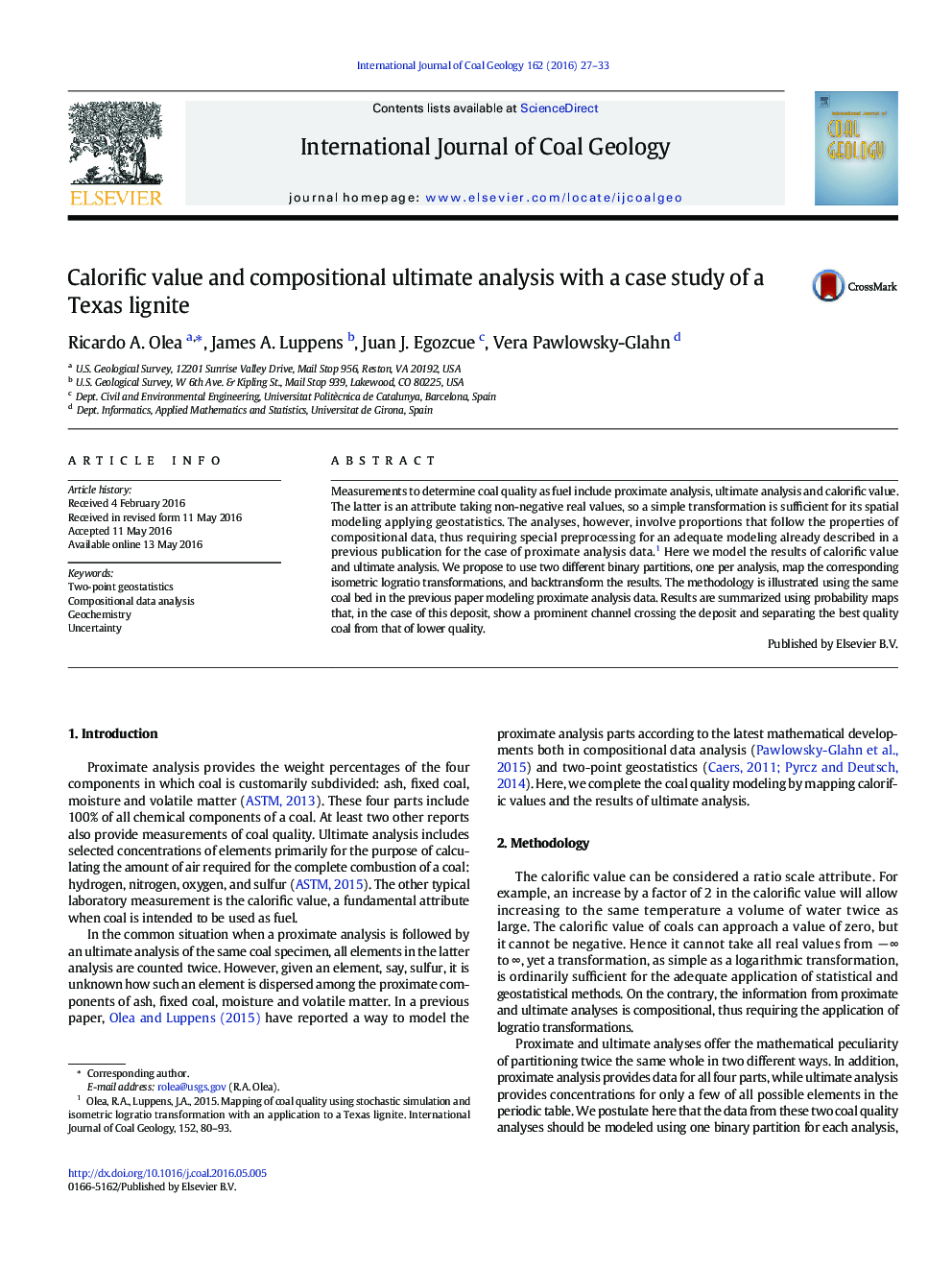| Article ID | Journal | Published Year | Pages | File Type |
|---|---|---|---|---|
| 8123877 | International Journal of Coal Geology | 2016 | 7 Pages |
Abstract
Measurements to determine coal quality as fuel include proximate analysis, ultimate analysis and calorific value. The latter is an attribute taking non-negative real values, so a simple transformation is sufficient for its spatial modeling applying geostatistics. The analyses, however, involve proportions that follow the properties of compositional data, thus requiring special preprocessing for an adequate modeling already described in a previous publication for the case of proximate analysis data.1 Here we model the results of calorific value and ultimate analysis. We propose to use two different binary partitions, one per analysis, map the corresponding isometric logratio transformations, and backtransform the results. The methodology is illustrated using the same coal bed in the previous paper modeling proximate analysis data. Results are summarized using probability maps that, in the case of this deposit, show a prominent channel crossing the deposit and separating the best quality coal from that of lower quality.
Related Topics
Physical Sciences and Engineering
Earth and Planetary Sciences
Economic Geology
Authors
Ricardo A. Olea, James A. Luppens, Juan J. Egozcue, Vera Pawlowsky-Glahn,
